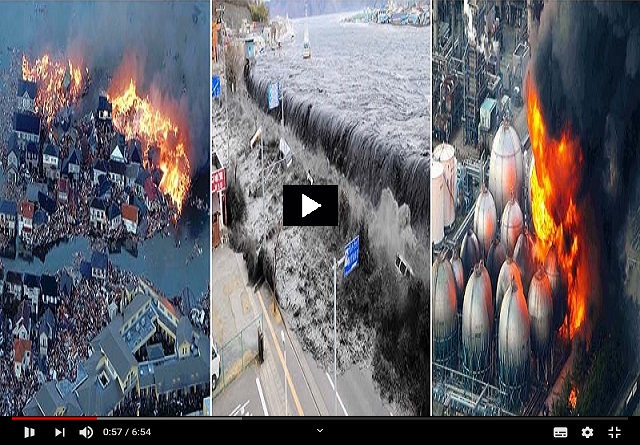Life can be tough nowadays, but most of us are lucky enough to have never known true hardship: the type that our grandparents and great grandparents faced during the years of the Great Depression. But despite how hard life was back then, where there was a will, there was almost always a way.
So many people suffered extreme financial hardship during the Great Depression of the 1930s, and in turn that led to some pretty extreme frugality. The phrase “use it up, wear it out, make do or do without” was popularized during this era, and for good reason.
People had to get creative to make ends meet, and one of the ways they did this was by saving, reusing and repurposing absolutely everything. What we wouldn’t think twice about tossing today was as good as gold back then.
The most valuable items were, well, pretty much anything. But in general, the more uses you could get from a single item, the more valuable it was.
I highly recommend this book! Here’s just a small glimpse of what you’ll find in The Lost SuperFoods:
The US Army’s Forgotten Food Miracle And 126 Superfoods That You Can Store Without Refrigeration for Years
The video below will shock you because you will be among the first to watching this secret!

In a war-torn country, several items can become difficult to acquire due to various reasons such as disrupted supply chains, damaged infrastructure, economic instability, and restricted movement. Some of the items that may become hard to obtain include:
1. Food and water: War often leads to scarcity of food and clean water as agricultural production is disrupted, markets are destroyed, and supply routes are blocked. This can result in malnutrition, famine, and waterborne diseases.
2. Medicines and medical supplies: Hospitals and pharmacies may be destroyed or lack essential medicines and medical equipment. The availability of life-saving drugs, vaccines, antibiotics, and even basic first aid supplies becomes limited, leading to increased mortality rates.
3. Fuel and energy: Conflict can disrupt the production, transportation, and distribution of fuel and energy sources like gasoline, diesel, and electricity. This affects transportation, power supply, heating, and cooking facilities.
4. Shelter and housing materials: Destruction of homes, buildings, and infrastructure makes it challenging to find safe and adequate shelter. Building materials such as cement, bricks, and timber may also become scarce, hindering reconstruction efforts.
5. Communication devices and services: War can damage or destroy telecommunication networks, making it difficult to access mobile phones, internet services, and other means of communication. This hampers communication within the country and with the outside world.
6. Educational resources: Schools and universities may be damaged or closed, leading to a lack of access to education. Books, stationary, and other educational resources become scarce, affecting the learning opportunities for children and youth.
7. Clothing and personal hygiene products: Disrupted supply chains and economic instability can make it challenging to find affordable clothing and personal hygiene items like soap, sanitary pads, toothpaste, and toilet paper.
Also watch- COVID-19 returns in 2024! The video below will shock you because you will be among the first to find out the truth!
8. Safety and security: The availability of weapons and ammunition may increase during conflicts, making them more accessible to armed groups or individuals. This can result in an increased risk of violence, further impacting the safety and security of the population.
In a grid-down situation, where there is a widespread and prolonged power outage or collapse of infrastructure, several items are likely to become in short supply. Here are some examples:
1. Food: Fresh produce, perishable items, and refrigerated/frozen foods will quickly become scarce as the power outage affects storage and transportation. Non-perishable food items may also become limited if supply chains are disrupted.
2. Water: Clean and safe drinking water might become scarce, especially if water treatment plants are not functioning. Bottled water and other water purification supplies may also be in short supply.
3. Fuel: Gasoline, diesel, and other types of fuel can become limited as fuel stations rely on electricity to operate pumps. This shortage can impact transportation, generators, and heating systems.
4. Medical supplies: Prescription medications, medical equipment, and other healthcare supplies may become scarce as manufacturing and distribution networks are disrupted.
5. Batteries: Batteries for flashlights, radios, and other essential devices can quickly run out, leading to a shortage if replacements are not readily available.
6. Personal hygiene products: Items like toilet paper, soap, shampoo, toothpaste, and feminine hygiene products may become limited due to disrupted manufacturing and distribution.
7. Communication devices: Batteries, chargers, and other accessories for cell phones, radios, or walkie-talkies might become scarce, making it difficult to maintain communication during the crisis.
8. Building materials: Construction materials such as lumber, cement, and nails could become limited, affecting repairs and rebuilding efforts.
9. Cash: If electronic payment systems are down, access to cash from ATMs or banks may become challenging, leading to a shortage of physical currency.
10. Security-related items: Firearms, ammunition, and other self-defense tools might become scarce as people seek to protect themselves and their belongings during uncertain times.
During an economic recession or depression, several items may become scarce due to various factors such as decreased production, increased demand, and supply chain disruptions.
While the exact items that could become scarce can vary depending on the specific circumstances of the depression, some common examples include:
1. Jobs: Unemployment rates tend to rise during a depression, making job opportunities scarce
2. Basic necessities: Essential items like food, water, and hygiene products may become limited if production and distribution are disrupted
3. Housing: The demand for affordable housing often increases during a depression, leading to a shortage of available options
4. Credit and loans: Banks and financial institutions may become more hesitant to lend money during a depression, making credit and loans harder to obtain
5. Fuel and energy: As economic activity decreases, the demand for fuel and energy may decline, resulting in a decrease in supply and potentially shortages
6. Medical supplies: During a health crisis or pandemic, medical supplies such as personal protective equipment (PPE), masks, and ventilators may face scarcity due to increased demand
7. Luxury goods: Non-essential items like luxury goods and high-end products often experience decreased demand during a depression, but their scarcity is not as critical as essential items
8. Services: Certain services, such as travel, tourism, and entertainment, may become limited or even cease to exist due to reduced consumer spending and restrictions9. Investment opportunities: During a depression, investment opportunities may become scarce as businesses struggle and the stock market experiences volatility
10. Disposable income: People’s disposable income tends to decrease during a depression, impacting their ability to afford non-essential goods and services.
It is important to note that the specific items that become difficult to acquire can vary depending on the nature and duration of the conflict, as well as the socio-economic conditions of the country prior to the recession, depression, grid-down event, or war.
Attention: The US is Facing The BIGGEST Threat Of The Century
War Is Just Around The Corner
You’re about to lose everything you’ve worked so hard for your entire life and it’s even not going to be your fault! – your house, your car, your credit card will be worthless…
So pay chose attention because this video will change your life forever for the good!

If you have any dissatisfaction with my content, you can tell me here and I will fix the problem, because I care about every reader and even more so about your opinion!
